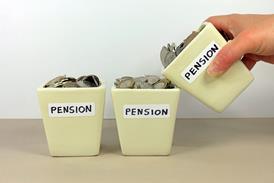The UK’s biggest defined contribution master trust has appointed Hymans Robertson and WTW to help it design a decumulation service for its members.
Nest has brought in the two consultancy groups to help with an “innovative programme to develop a new retirement income offering for DC retirees”, it said in a statement.
Since its launch in 2012, Nest has grown rapidly to serve more than 13 million members and one million employers. It has approximately £44bn in assets under management.
“As Nest’s membership matures, members will increasingly rely on income from their DC savings in retirement,” the master trust said.
‘Life-long sustainable income’
The organisation is seeking to expand its range of products and services, as well as providing members with guidance and tools to help them secure a “life-long, sustainable income”.
Earlier this year, Nest appointed Mark Rowlands as head of retirement to lead the organisation’s work on a post-retirement proposition. He at the time that explained that Nest would explore how to integrate mortality pooling into the investment design to increase income levels through retirement.
In Nest’s statement today (14 October), Rowlands said Nest wanted to ensure that its members’ “journey to retirement is as seamless as their savings journey”.
“We know our members want a decumulation product which provides some flexibility in the early years of retirement, but also provides sustainable lifelong income as a wage replacement, so that it’s in place by the time our members need it,” he said.
WTW and Hymans Robertson were “well placed” to support Nest’s work in this area, Rowlands said.
A long time coming
Nest has been lobbying government for the ability to offer at-retirement and post-retirement services for years.
In 2016, the Department for Work and Pensions (DWP) consulted on allowing Nest to offer a drawdown product. An independent review – commissioned by then-shadow work and pensions secretary Rachel Reeves – called for the master trust to be allowed to compete in the decumulation market.
However, the government eventually decided to block this in favour of encouraging innovation from private sector providers.
The master trust has since introduced some at-retirement functionality for members in response to pension freedoms, including the ability to take entire pots as cash and to make regular withdrawals from a “guided retirement fund”.
There have been renewed calls for Nest to be allowed into the post-retirement market since a separate government consultation in 2022. With DC schemes now likely to be required to offer a default retirement option for members, the decumulation question has become more pertinent.
The adequacy challenge
Paul Waters, head of DC markets at Hymans Robertson, said: “We know across the industry large numbers of DC savers are facing a profound retirement adequacy challenge, along with complex decisions at retirement.
“Innovative retirement solutions can play a large role in addressing these challenges and delivering better member outcomes.
“Nest’s groundbreaking work here is leading the way and we know from experience, where Nest innovate and lead others then follow, enabling wider industry change.”
Simon Eagle, senior actuary at WTW, said working with Nest was “a real privilege” and “a very exciting challenge with outcomes that are likely to benefit members for years to come”.
Further reading
Nest targets post-retirement with Rowlands role (2 August 2024)
Government urged to allow Nest to offer drawdown (25 July 2022)
Mark Rowlands: Inaction on retirement defaults puts members at risk (24 April 2018)






















